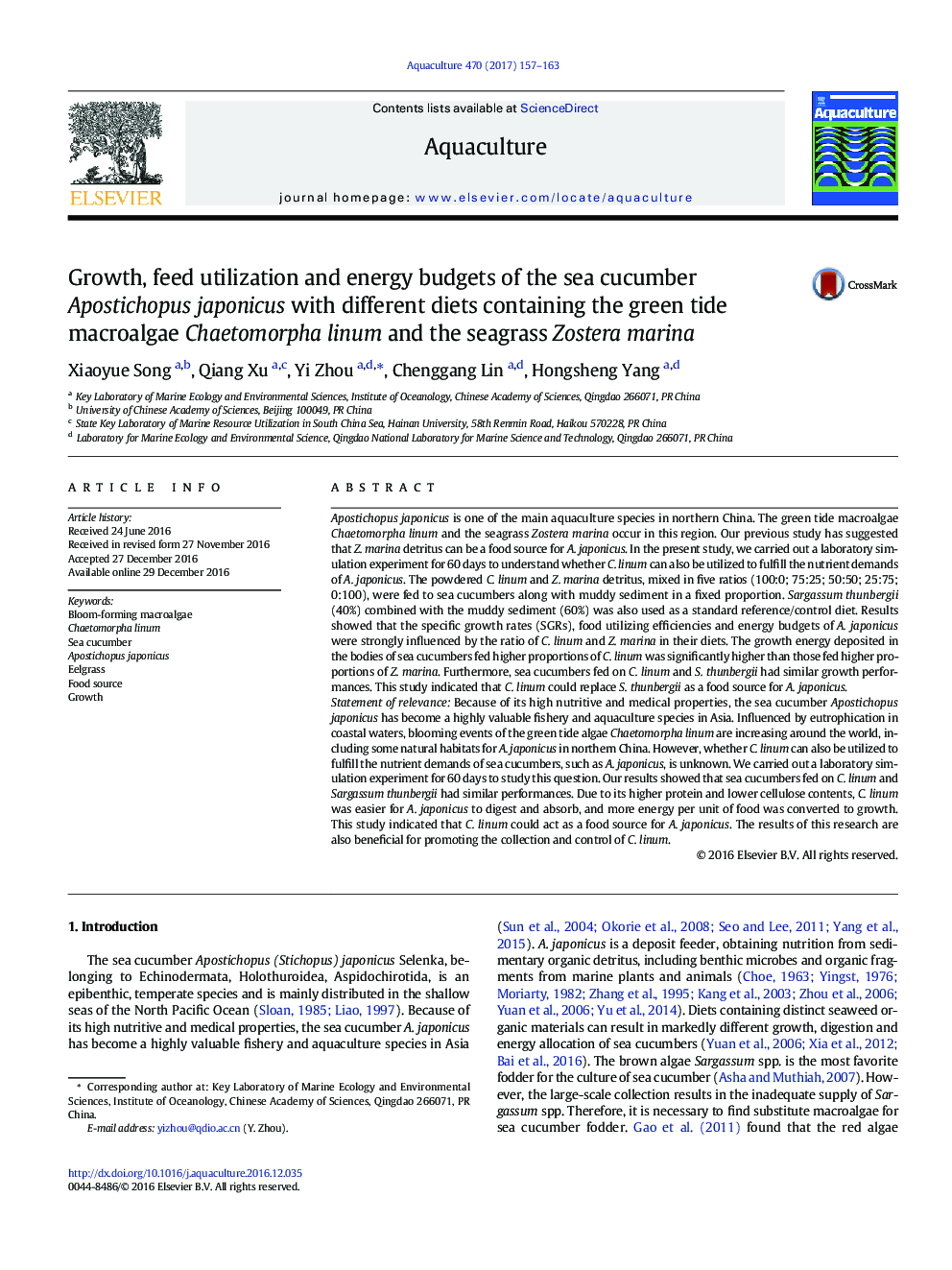| کد مقاله | کد نشریه | سال انتشار | مقاله انگلیسی | نسخه تمام متن |
|---|---|---|---|---|
| 5539362 | 1552818 | 2017 | 7 صفحه PDF | دانلود رایگان |

- A laboratory experiment was conducted to understand the possibility of C. linum as a food source for A. japonicus.
- A. japonicus eating larger quantities of C. linum presented higher SGRs.
- C. linum could replace S. thunbergii as a food source for A. japonicus.
Apostichopus japonicus is one of the main aquaculture species in northern China. The green tide macroalgae Chaetomorpha linum and the seagrass Zostera marina occur in this region. Our previous study has suggested that Z. marina detritus can be a food source for A. japonicus. In the present study, we carried out a laboratory simulation experiment for 60Â days to understand whether C. linum can also be utilized to fulfill the nutrient demands of A. japonicus. The powdered C. linum and Z. marina detritus, mixed in five ratios (100:0; 75:25; 50:50; 25:75; 0:100), were fed to sea cucumbers along with muddy sediment in a fixed proportion. Sargassum thunbergii (40%) combined with the muddy sediment (60%) was also used as a standard reference/control diet. Results showed that the specific growth rates (SGRs), food utilizing efficiencies and energy budgets of A. japonicus were strongly influenced by the ratio of C. linum and Z. marina in their diets. The growth energy deposited in the bodies of sea cucumbers fed higher proportions of C. linum was significantly higher than those fed higher proportions of Z. marina. Furthermore, sea cucumbers fed on C. linum and S. thunbergii had similar growth performances. This study indicated that C. linum could replace S. thunbergii as a food source for A. japonicus.Statement of relevanceBecause of its high nutritive and medical properties, the sea cucumber Apostichopus japonicus has become a highly valuable fishery and aquaculture species in Asia. Influenced by eutrophication in coastal waters, blooming events of the green tide algae Chaetomorpha linum are increasing around the world, including some natural habitats for A. japonicus in northern China. However, whether C. linum can also be utilized to fulfill the nutrient demands of sea cucumbers, such as A. japonicus, is unknown. We carried out a laboratory simulation experiment for 60Â days to study this question. Our results showed that sea cucumbers fed on C. linum and Sargassum thunbergii had similar performances. Due to its higher protein and lower cellulose contents, C. linum was easier for A. japonicus to digest and absorb, and more energy per unit of food was converted to growth. This study indicated that C. linum could act as a food source for A. japonicus. The results of this research are also beneficial for promoting the collection and control of C. linum.
Journal: Aquaculture - Volume 470, 1 March 2017, Pages 157-163